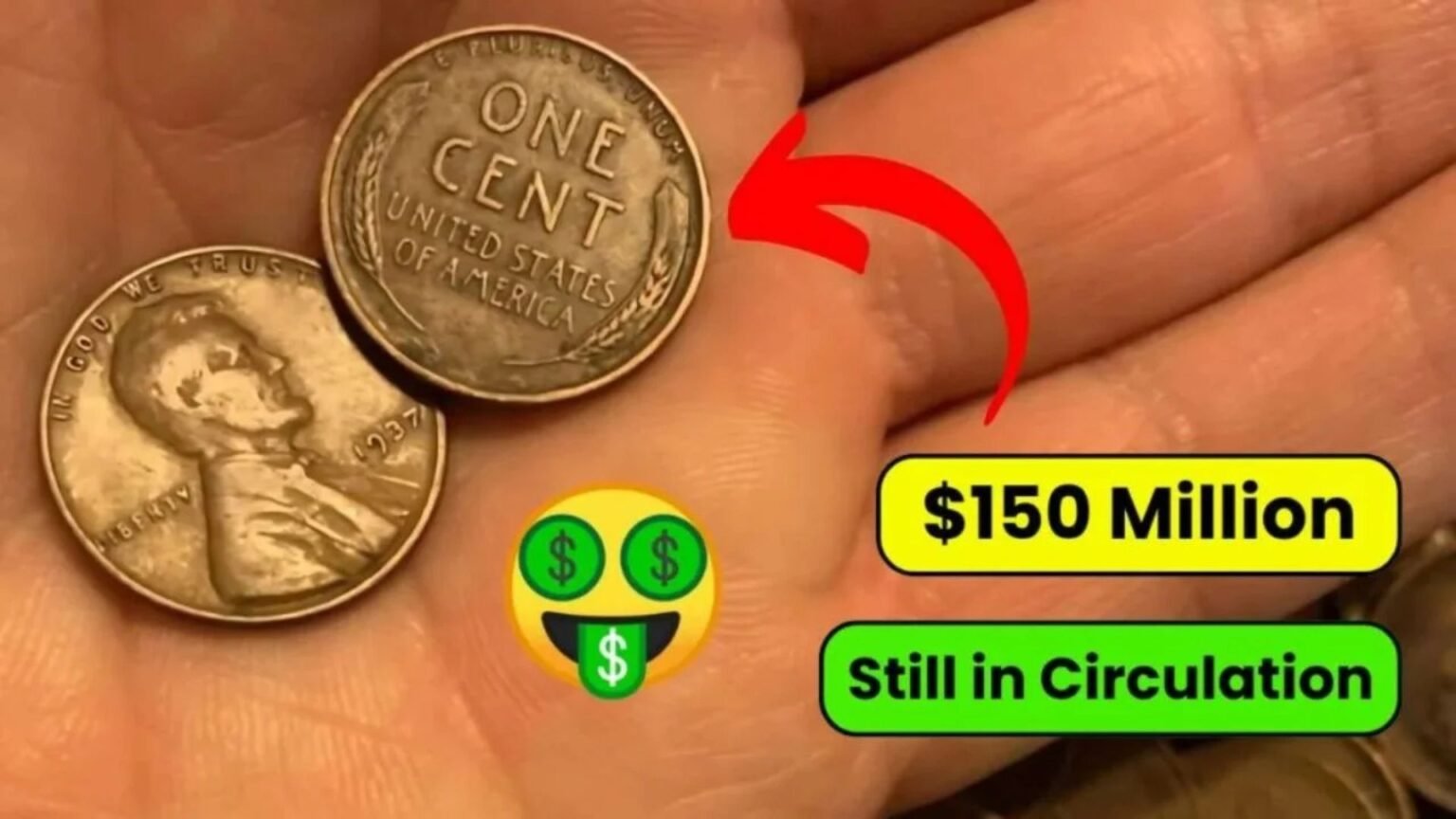Have you ever found an old penny in your pocket and wondered if it’s worth more than just one cent? The Lincoln Wheat Penny, minted from 1909 to 1958, is a small coin with a big story. Some rare versions of this penny can be worth thousands—or even millions—of dollars! This guide will explain why these pennies are so valuable, how to spot a rare one, and what to do if you find a treasure. Let’s dive into the exciting world of coin collecting!
What Is the Lincoln Wheat Penny?
The Lincoln Wheat Penny is a one-cent coin first made in 1909 to celebrate the 100th birthday of President Abraham Lincoln. It was the first U.S. coin to feature a real person’s face, designed by Victor David Brenner. The front shows Lincoln’s profile, and the back has two wheat stalks, giving it the nickname “Wheat Penny.” These coins were used until 1958, when a new design with the Lincoln Memorial replaced them.
Why Is It Special?
The Wheat Penny isn’t just a piece of history—it’s a collector’s dream. While most are worth only a few cents, some rare ones can fetch huge prices at auctions. Their value comes from:
- Rarity: Some years had fewer coins made, making them hard to find.
- Minting Errors: Mistakes like doubled letters or wrong metals make coins unique.
- Condition: Coins in great shape, with sharp details, are worth more.
- Historical Value: The penny’s ties to Lincoln and early 20th-century America add appeal.
The Most Valuable Lincoln Wheat Pennies
Not every Wheat Penny is a jackpot, but a few stand out for their massive value. Here’s a look at the top ones collectors hunt for:
| Year | Mint Mark | Key Feature | Estimated Value |
|---|---|---|---|
| 1909-S VDB | S (San Francisco) | Designer’s initials (VDB) on back | $700–$100,000+ |
| 1914-D | D (Denver) | Low mintage | $500–$10,000+ |
| 1922 No D | None (Denver error) | Missing mint mark | $1,000–$100,000+ |
| 1943 Copper | D, S, or none | Made with copper instead of steel | $100,000–$2.3 million+ |
| 1955 Double Die | None (Philadelphia) | Doubled text on front | $1,000–$50,000+ |
The Legendary 1943 Copper Penny
During World War II, the U.S. Mint switched to steel pennies in 1943 to save copper for the war. By mistake, a few pennies were made with copper, creating one of the rarest coins ever. Only about 20 of these exist, and one sold for $1.7 million in 2010. Experts say a pristine 1943 copper penny could be worth up to $2.3 million today
Other Rare Finds
- 1909-S VDB: Only 484,000 were made, and the designer’s initials (VDB) were removed after public complaints, making it super rare.
- 1955 Double Die: A minting error caused doubled text, like “LIBERTY” or the date, making these coins valuable.
- 1922 No D: Some Denver pennies were missing the “D” mint mark, a mistake that boosts their worth.
How to Spot a Valuable Wheat Penny
Think you’ve found a rare penny? Grab a magnifying glass and follow these steps to check if it’s a winner:
- Check the Year: Look for key dates like 1909, 1914, 1922, 1943, or 1955.
- Find the Mint Mark: Look under the date for a tiny “S” (San Francisco), “D” (Denver), or no mark (Philadelphia). Rare coins often have an “S” or “D.”
- Look for Errors: Check for doubled letters, missing mint marks, or unusual colors (like a copper 1943 penny).
- Test with a Magnet: For 1943 pennies, steel ones stick to a magnet, but copper ones don’t. A non-magnetic 1943 penny could be a big find!
- Check Condition: Is it shiny with clear details, or worn and scratched? Better condition means higher value.
Don’t Clean Your Coin!
If you think you’ve found a valuable penny, don’t polish or clean it. Cleaning can damage the surface and lower its value. Handle it by the edges and store it in a protective sleeve.
Where to Find Lincoln Wheat Pennies
These pennies are still out there, hiding in plain sight. Here are some places to look:
- Loose Change: Check your pocket change or cash registers.
- Coin Jars: Dig through old jars at home or ask family members.
- Bank Rolls: Buy rolls of pennies from banks and search through them.
- Estate Sales: Look for coin collections at sales or flea markets.
- Online Marketplaces: Sites like eBay sell Wheat Pennies, but buy from trusted sellers to avoid fakes.
What to Do If You Find a Rare Penny
Found a potential treasure? Here’s what to do next:
- Protect It: Store the coin in an acid-free holder to keep it safe.
- Get It Graded: Send it to a professional grading service like PCGS or NGC. They’ll confirm its authenticity and grade its condition.
- Research Value: Check recent auction prices on sites like Heritage Auctions or CoinTrackers.
- Sell Wisely: Options include auction houses (Heritage, Stack’s Bowers), coin dealers, or online platforms like eBay. Get it graded first to maximize value.
Why Collectors Love Wheat Pennies
Wheat Pennies are more than just money—they’re tiny pieces of history. They connect us to Lincoln’s legacy, the Great Depression, and World War II. Collectors love the thrill of the hunt, the stories behind each coin, and the chance to find a life-changing treasure. Plus, most Wheat Pennies are affordable, making them a great hobby for beginners.
Tips for New Collectors
- Start Simple: Get a coin folder and fill it with common Wheat Pennies.
- Learn Grading: Study guides to spot high-quality coins.
- Join a Club: Connect with other collectors at coin shows or online forums.
- Stay Safe: Avoid scams by buying certified coins from trusted sources.
Conclusion
The Lincoln Wheat Penny is proof that small things can hold big value. Whether it’s a 1943 copper penny worth millions or a 1909-S VDB worth thousands, these coins are treasures waiting to be found. Next time you see an old penny, take a closer look—you might be holding a piece of history that could change your life. Start your treasure hunt today, and who knows? That dusty coin jar might hold a fortune!
FAQs About Lincoln Wheat Pennies
1. What makes a Lincoln Wheat Penny valuable?
Rarity, minting errors, condition, and historical significance drive value. Key dates like 1909-S VDB or 1943 copper are especially prized.
2. How can I tell if my 1943 penny is copper?
Use a magnet. Steel pennies stick, but copper ones don’t. Copper 1943 pennies are super rare and valuable.
3. Should I clean my old pennies?
No! Cleaning damages the coin and lowers its value. Handle it carefully and store it properly.
4. Where can I sell a rare Wheat Penny?
Sell through auction houses (Heritage, Stack’s Bowers), certified coin dealers, or trusted online platforms like eBay after grading.
5. Are all Wheat Pennies worth a lot?
Most are worth a few cents, but rare ones with errors or low mintage can be worth thousands or millions.





